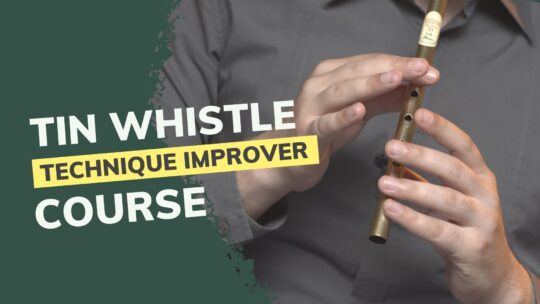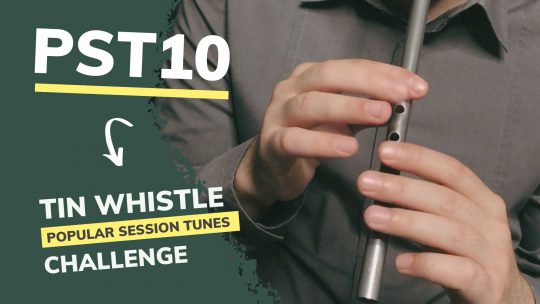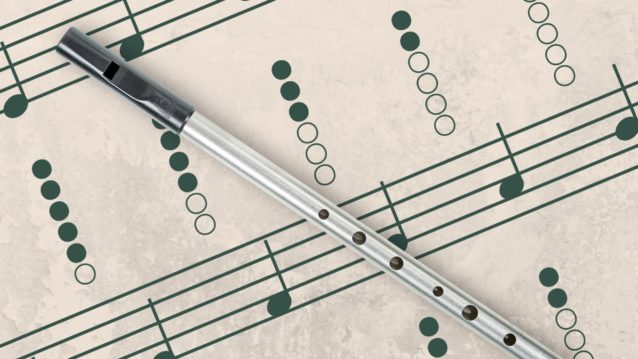In this lesson, we’ll talk about slides. It is a pretty standard tin whistle ornament and is widely used in Irish traditional music. You may also come across its alternative names, which are “glissando” or “portamento”, as usually named in classical music.
How to slide on a tin whistle (penny whistle)?
Slides come very naturally on woodwind instruments in general. And that applies to whistles as well. It’s best described as an inflection of the main (principal) note. To make a slide ornament, you actually do it by starting with the note below the original note you want to play. For example, to play a slide on the note G, you should actually play a note F# for a moment, and then lift the finger to get the note G. Sliding is done by pushing the finger forward (away from the palm) and upward, gradually uncovering the hole and revealing the note above. That’s it!
When to use sliding on a tin whistle?
Slides can be pretty handy in slow airs and ballads as well as fast jigs and reels. What some players do, especially in faster tunes, is to tongue the note below, just before lifting a finger. It gives a better accent to the ornament, creating a sound like pronouncing “t-ouuu-a”.
Below you can see an example of using slides in the songs Down By The Sally Gardens and The South Wind.
And here’s the sheet music and tabs for the examples, as played in the video. Notes on which we are doing slides are marked with the letter “S”.


As you may notice, there are no strict rules that define when it is best to use sliding. If there is only one general rule, we would say that you will usually slide on the notes that last longer than other notes on average. But we believe you will get the best feel from listening to music and playing it. Then slides may become an expression that shapes your own style, mixed with other embellishments. You use a slide for the same reason you are doing any other ornamentation, to emphasize a specific note that you think is important for the melody.
You usually use slides on the longer notes in a tune.
LearnTinWhistle.com
Practicing tin whistle slides
Using slides when melodically going up the scale should be straightforward. For example, playing a plain note D and then sliding a G. However, a little bit harder is when you go down a scale. For example, playing a plain note B, and then sliding a note G. Another thing that is worth mentioning, the tempo of a tune or a song usually has an impact on the slide speed. Therefore, it’s good to practice slides by changing the tempo on a metronome to get a quick sense of it. You’ll see how a slower tempo also requires a more gradual (longer) slide to fit the whole feeling.
Another good example of playing slides on a tin whistle
Below is a video of Cormac Breatnach playing the whistle. Listen carefully throughout the whole set of tunes, there are not many slides. Well, probably because one usually doesn’t want to overuse it. But, you’ll notice how he smartly uses slides on some of the longer notes when doing repeating parts to add some emotional variations to the tune, usually followed by a vibrato.




